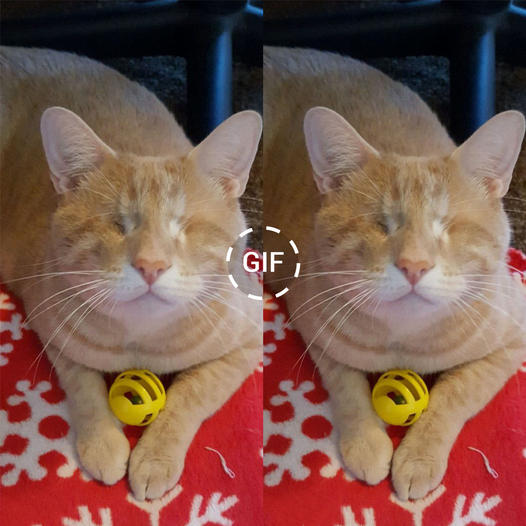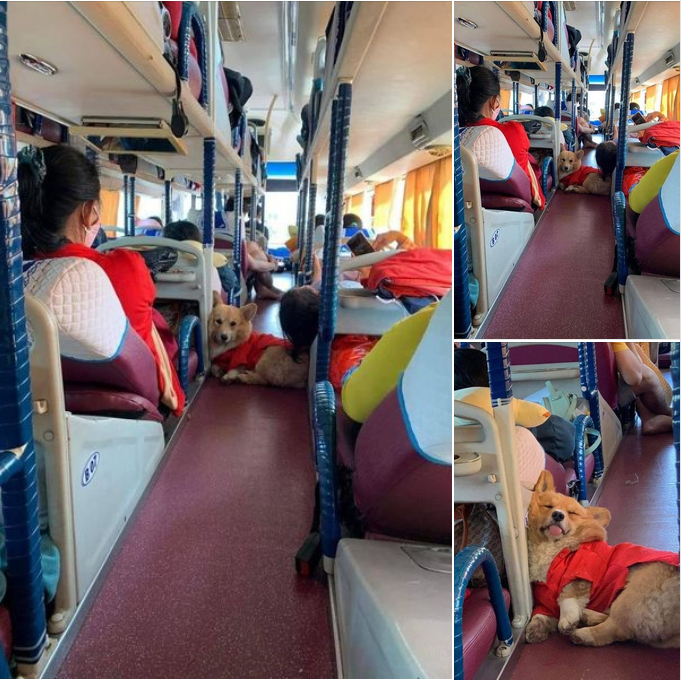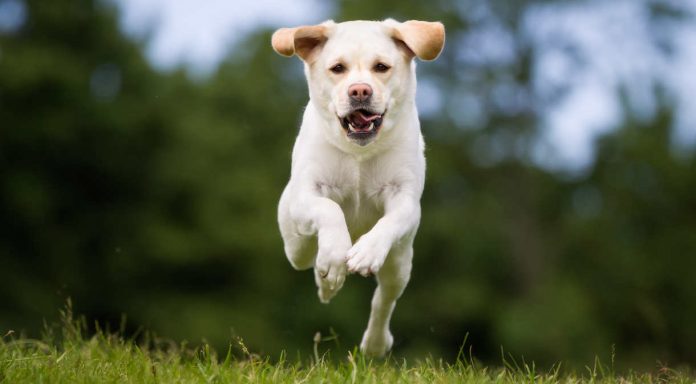
Dealing with an aggressive Labrador can be a challenging and distressing experience. In this article, professional Behaviorist Sian Ryan delves into the reasons behind dogs becoming reactive and offers advice on how owners can help improve their behavior. If you have a Labrador and are used to their social and friendly nature, it can be disheartening to realize that your own pet is reactive towards other dogs or people. It can be frustrating when others brush off your concerns, assuming that all Labradors are inherently friendly. Dealing with a reactive Labrador requires a different approach, as each dog is unique and may act aggressively for various reasons. It is important to understand that occasional displays of aggression are normal for all dogs, just as humans sometimes lose their temper. When working with a reactive Labrador, the goal is not to simply suppress the behavior but to enhance the dog’s self-control. By altering the dog’s emotional and behavioral responses in trigger situations, the need for aggression can be eliminated. Recognizing the warning signs of reactivity in Labradors, such as turning away, yawning, or dilated pupils, can help prevent escalation to more aggressive behavior like growling or biting. It is crucial to address a Labrador’s reactive behavior early on to prevent further escalation. Ignoring these warning signs or punishing them can lead to more severe aggressive responses. By understanding the underlying emotions causing the reactivity and responding appropriately, owners can help their Labradors develop better control in challenging situations.
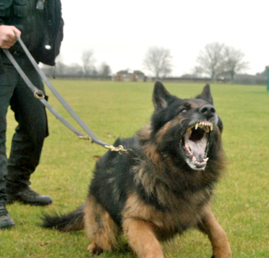
Fear aggression in Labradors often stems from a sense of fear towards certain situations. This fear can be triggered by the approach of another dog or person, the threat of losing something they value, or the anticipation of pain. To address this behavior, it is important to work on changing the dog’s emotional response from fear to tolerance and even enjoyment. Additionally, if the dog is in pain, proper pain management is crucial. Another common reason for aggression in Labradors is frustration. A frustrated dog may display fewer signals of discomfort, such as lip or nose licks. Signs of frustration include a dog bouncing on the end of the leash, with ears pricked, tail up, and barking loudly. This behavior often occurs when the dog is unable to greet other dogs due to being restrained by a leash or a fence. For many frustrated greeters, off-leash interactions may be more appropriate as they can greet other dogs in a more natural way. However, some dogs may exhibit socially inappropriate behavior, such as rushing towards other dogs without considering their signals of discomfort. This can lead to conflicts with other dogs, potentially escalating to fear-based aggression. It is not uncommon for dogs that initially show frustration-based reactivity to develop fear-based aggression after negative interactions with other dogs. This highlights the importance of addressing both fear and frustration in Labradors to promote more positive interactions with others.
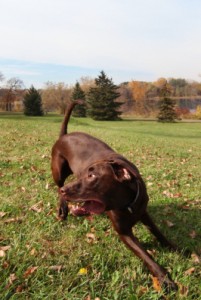
Can Predatory Instincts Lead to Aggression in Labradors? It’s important to note that aggression in Labradors can sometimes stem from their predatory instincts. While Labradors are not typically known for hunting and killing prey, some dogs may still be triggered by fast-moving objects such as bikes, joggers, or small animals found in outdoor settings. If a Labrador is unable to fulfill their instinct to chase, they may exhibit aggressive behavior out of frustration. It’s crucial to address the underlying cause of the aggression before attempting to modify their behavior, as medical issues like pain or illness could be contributing factors.
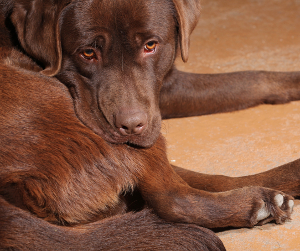
The main cause of aggression in dogs is often pain. If your dog seems uncomfortable or hesitant to move, it’s important to consult with your vet. Recording videos of your dog’s movements or behaviors can be helpful for the vet to accurately assess the situation. Even if an initial examination doesn’t reveal pain, trying a short course of pain relief can be beneficial. Keep track of any changes in behavior or movement. Pain can also trigger aggression in dogs, whether towards other dogs during play or towards people when touched or moved from a resting spot. Medical issues can also contribute to aggressive behavior, so a thorough check-up by the vet is necessary, especially if the aggression seems to have developed suddenly in a Labrador. In the short term, it’s important to avoid situations that trigger aggression in your dog to ensure safety and improve their overall well-being. Repeated instances of aggression strengthen the behavior and make it harder to change, so it’s important to address reactive behavior early on. Finding alternative walking routes with fewer triggers or seeking out secure locations for walks can help manage the situation. Reacting aggressively towards your dog when they display reactive behavior is not effective and can make the situation worse. Instead, calmly remove them from the triggering situation and reward calm behavior with treats. This helps change their emotional response and associate the trigger with positive reinforcement. Changing your Labrador’s behavior to reduce reactivity takes time and patience, especially if the behavior has been going on for a while. Understanding the underlying reasons for your Labrador’s aggression and implementing strategies to address it can help improve their behavior in the long term.
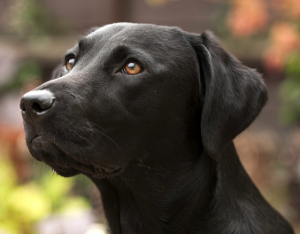
A dog’s aggressive behavior is a common part of social interaction, but it’s essential to consider your dog’s responses and find ways to reduce their aggression. Understanding that your dog has the potential to change their behavior is crucial, although genetic factors, fear, anxiety, or the length of time they’ve been practicing aggressive behavior may limit progress. Patience and acceptance of your dog’s unique needs are key. You may need to adjust your lifestyle to accommodate them, but that doesn’t mean you can’t have fun together. Activities tailored for sensitive dogs, such as scentwork or tracking, can be beneficial. Changing your Labrador’s reactive behavior involves changing their emotional response rather than just suppressing aggression through punishment. Focus on helping them manage themselves in arousing situations and learn appropriate social skills around other dogs. Each dog is unique, so a behavior modification plan should be tailored to their individual needs. Seeking expert help for working with aggressive behavior is advisable, as they can provide objective feedback, advice, and support. Various techniques, such as desensitization and counter conditioning, can be effective, with DS/CC and DRI being widely regarded as the most effective. Desensitization and counter conditioning involve associating the presence of triggers with something your dog really wants, like high-value food, to change their negative emotions. Work at a distance where your dog is not reactive and gradually move closer as they become more comfortable. It’s important to respect your dog’s fear and anxiety levels and avoid pushing them beyond their tolerance threshold. Techniques like BAT rely on reinforcing calm behavior, while extreme methods like CAT and flooding should be avoided. Overall, helping your aggressive Labrador involves understanding their unique needs, providing appropriate activities, and using effective behavior modification techniques with expert guidance.

When dealing with aggressive behavior in your dog, it can be helpful to focus on improving their ability to control their impulses and develop default calm behaviors. By practicing exercises that promote impulse control and teaching them to respond calmly in certain situations, you can reduce their reactive behavior. For example, having your dog sit automatically before putting on their leash or waiting calmly without being prompted when opening the car door. This approach is especially beneficial for frustration-related aggression, as it teaches your Labrador to remain calm when they are denied access to something they want. Finding a trainer who is experienced in working with reactive dogs is crucial, as they will have the necessary skills and tools to help your Labrador learn to manage their behavior around other dogs. Improving reactive behavior takes time and patience, so it is important to trust the trainer you are working with and be prepared to invest the necessary time. This article only touches on some of the techniques available for helping reactive dogs, but there is plenty of support out there for you and your Labrador. Sian Ryan is a knowledgeable Animal Behaviorist based in Cambridgeshire, with years of experience in training and behavior counseling. She has a background in research and applies her expertise to help dogs develop self-control and improve their behavior. Sian owns the Developing Dogs Training and Behavior Centre in Cambridgeshire and offers seminars and workshops both locally and internationally. Check out her book, “No Walks? No Worries!” for tips on maintaining your dog’s well-being when their exercise is restricted.


